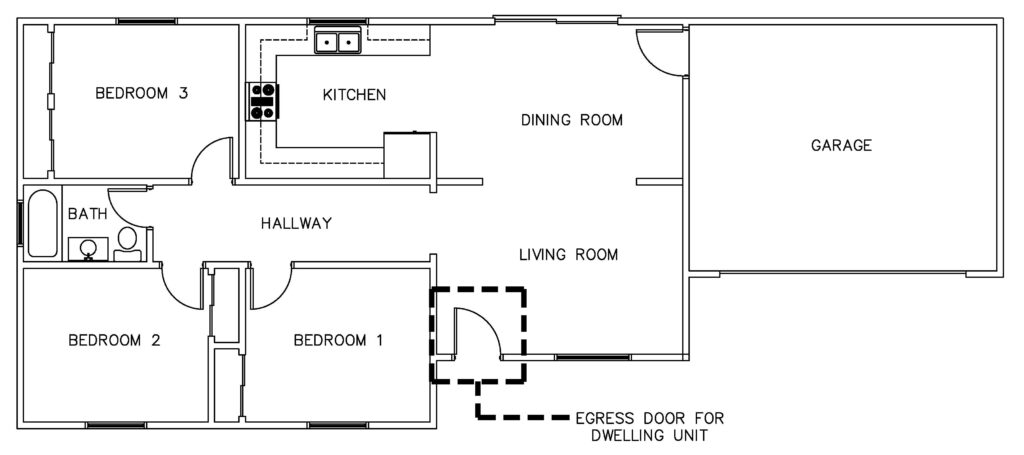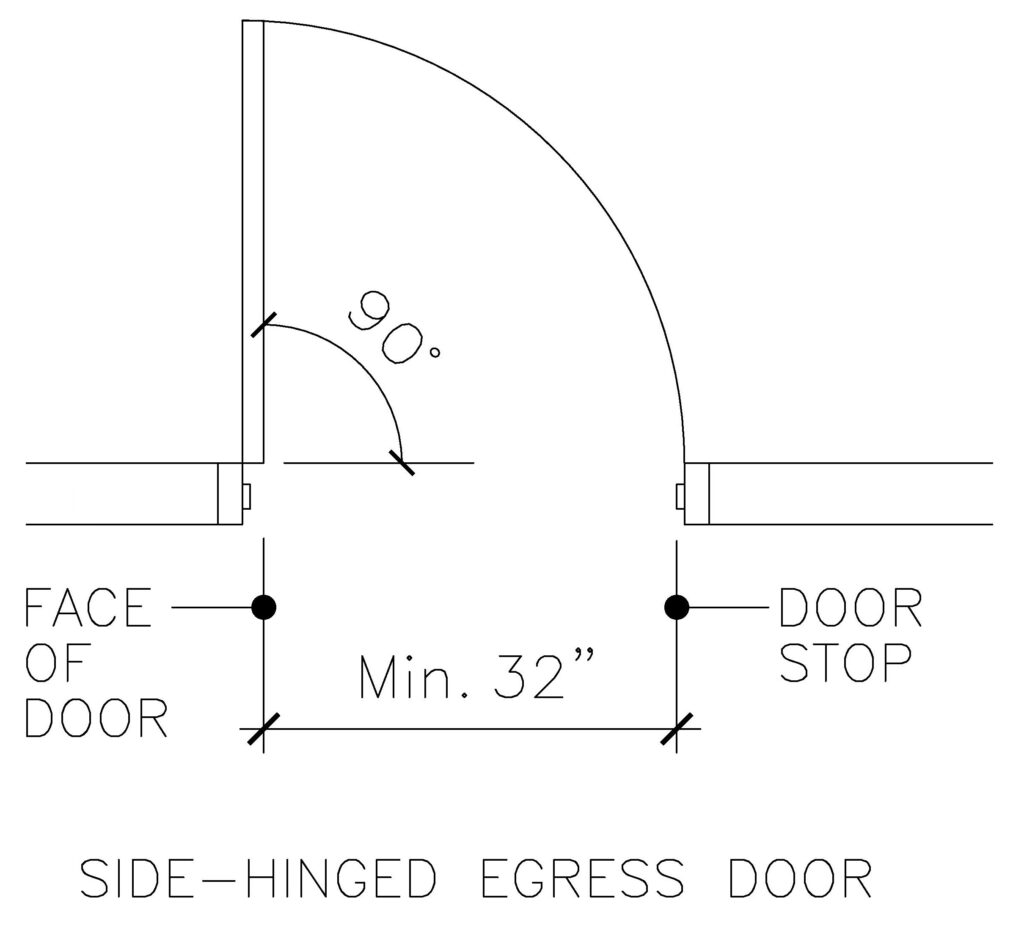When it comes to the standard size of a front door for a residential dwelling, we must understand that the International Residential Code (IRC) outlines the requirements for the minimum door size of a home used for exiting.
The minimum size of an egress door for a residential dwelling is found in Section R311 of the International Residential Code (IRC).
It is important to note that the International Residential Code (IRC) applies to detached one-and-two family dwellings and townhouses not more than three stories above grade plane in height with a separate means of egress and their accessory structures not more than three stories above grade plane in height.
To learn the difference between the International Residential Code (IRC) and the International Building Code (IBC), be sure to check out this POST.
So lets get into what the residential egress door requirements are in accordance with the International Residential Code (IRC).
Residential Means of Egress
Egress Door
Section R311.1 of the IRC states that dwellings must be provided with a means of egress that has a continuous and unobstructed path of travel, both vertically and horizontally from all portions of the house to the required egress door.
This path of egress travel cannot go through a garage and the required egress door must open directly into a public way or to a yard or court that opens to a public way.
How Many Egress Doors are Required in a Home?
Section R311.2 states that at least one egress door must be provided for each dwelling unit. For example, a single family home requires at least one egress door and for a duplex, each unit must provide at least one egress door.
This egress door leading to the exterior is typically used as the front door. You can have more than one egress door, such as a back door to provide an extra level of safety, however the code only requires a minimum of one door for each dwelling.
See the example below…

Residential Egress Door Requirements
First off in order to be considered an Egress Door, the door must be side hinged. So for example if you look back at the floor plan above, the sliding patio door off the back does not count as a required egress door. This is because it is not side hinged and instead opens by sliding.
Now even through a sliding patio door does not meet the definition of an egress door, it might meet the requirements for emergency escape and rescue openings in a sleeping room when the opening size meets the opening requirements for emergency escape and rescue openings.
Want to read more about emergency escape and rescue opening? Be sure to check out this POST.
So what about the size of the front door?
What is the Standard Size of a Front Door?
When the front door is considered to be the Egress Door for exiting, it must have a clear width of no less than 32 inches. This dimension is measured between the face of the door to the stop when the door is open to 90 degrees.
As for the height of an egress door, the opening must not be less than 78 inches where measured from the top of the threshold to the bottom of the stop.

What Size Door Do I Need for a 32 inch Opening?
So now you know you need a 32 inch opening, but what size door do you need?
Well in order to achieve a 32 inch opening, you will need at least a 36 inch door. Based on how you measure the opening shown above, a 32 inch door does NOT provide a 32 inch opening. You must install at least a 36 inch door to achieve a 32 inch opening.
Once you take the thickness of the door, the thickness of the door stop, and the allowance for the hinges, you are left with the clear opening. This is why you need a 36 inch door to achieve a minimum 32 inch clear width opening.
What are Standard Interior Door Sizes?
So what about interior doors? Any requirements?
The only thing the code says in regards to interior doors or other non-egress doors is that other doors are note required to comply with the minimum dimensions outlined for egress doors. Meaning that there is no minimum dimension for other doors within a residential dwelling unit.
Even though there is not a minimum requirement for interior doors within this section or anywhere else in the residential code, common sense and best practices should be used when selecting an interior door of any size.
Remember what was said at the beginning, a continuous means of egress travel shall be provided throughout all portions of the dwelling to the required egress door for safe exiting. Therefore even with no minimum requirement for interior doors, consideration of the path of travel must be made when choosing an interior door.
Summary of Residential Egress Door Size
So this basically sums up the basic code requirements for residential egress door sizes. Therefore let us recap the requirements:
- Residential dwellings must be provided with a path of travel from all portions of the house to the egress door.
- At least one egress door must be provided for each dwelling unit.
- An egress door must have a clear width of no less than 32 inches and a clear height of no less than 78 inches.
- The clear width dimension is measured between the face of the door to the door stop when the door is open to 90 degrees.
- To achieve a 32 inch opening, you will need at least a 36 inch door.
- There is no minimum dimension required for other doors within a residential dwelling unit.
.
* Reference Source – 2018 International Residential Code – [Buy on Amazon]
